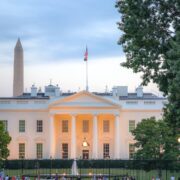TO commemorate Filipino American History Month (FAHM), Filipino American community leaders and the White House Initiative on Asian Americans, Native Hawaiians, and Pacific Islanders (WHIAANHPI) hosted a virtual celebration highlighting the positive historical impact of the vast Filipino American community.
In mostly pre-recorded segments shared in the virtual event on Thursday, Oct. 20, the White House event brought together artists, community leaders, Filipino American White House officials, and other advocates who highlighted historical milestones and current issues of the Filipino American community.
Jason Tengco, the White House Liason for the Office of Personnel Management), emceed the virtual event and shared a statement from President Joe Biden, saying, “When Filipino American history is preserved and shared, the millions of Filipino Americans [who] helped build this country can see themselves in the story of America.”
(Neither Biden nor Vice President Kamala Harris were present at the event.)
Filipinos are the second-largest Asian subgroup in the United States, and as of the most recent Census Bureau data, 4.2 million Filipinos live in the U.S. — and that population continues to grow.
As previously reported in the Asian Journal, the Filipino American National Historical Society (FANHS) first officially observed October as FAHM in 1992 to coincide with the first arrival of Filipinos in the 16th century and the birth month of labor leader Larry Itliong.
In 2009, former President Barack Obama became the first sitting president to acknowledge October as FAHM. In 2015, the White House celebrated its first official FAHM celebration, as previously reported by the Asian Journal.
The event opened up with a recording of rapper Ruby Ibarra, who has been a vocal proponent for Filipino American issues, especially the representation of Filipinos in mainstream American culture.
The celebration then introduced panels of government officials and community leaders who spoke about the growing significance of the Filipino American community throughout history.
“Our numbers are significant enough that we cannot be overlooked as one tiny bit of the population,” said Nani Coloretti, deputy director of the Office of Management and Budget, who is the highest-ranking Fil-Am in the current administration. “We are everywhere. And so the role Filipino Americans can play in this very diverse country is really to lead and to lead with values first.”
The White House consists of several Filipino American officials, including Gina Ortiz Jones, the Department of Defense’s undersecretary of the Air Force.
Ortiz Jones shared her Filipino family’s long legacy of military service and emphasized that her family motivated her to pursue public service as a Filipina lesbian.
Great to celebrate #FilipinoAmericanHistoryMonth by participating on the @WHIAANHPI Panel with so many impressive Biden-Harris Fil-Am leaders. Our diversity is our strength. pic.twitter.com/L7bcn8qL6T
— Under Secretary of the Air Force Gina Ortiz Jones (@UnderSecAF) October 21, 2022
“On my day-to-day, when I lead, I think about the fact that I’m honored to be the first woman of color to serve as an Under Secretary of any military department, the first out lesbian to serve as an Under Secretary of any military department,” Ortiz Jones, who is also an Iraq war veteran, said during the panel discussion, adding that she “certainly” wants “to make sure I’m not the last.”
In terms of learning about Filipino American history, many guests highlighted how scant Filipino American history actually is in American classrooms. Despite Filipinos being integral to the U.S. military, conversations about American imperialism, and the labor movement, Filipinos are largely left out of history books.
“We’re part of U.S. history, but we’re not,” said Luisa Blue, a member of the President’s Advisory Commission on AANHPI issues.
In more recent times, Filipinos have been integral to the tech and entertainment workforces, essential contributors in medicine and hospitality, and the small business sector — an exclusion made starker by the recent attacks on Asians during the COVID-19 pandemic.
“When you have unfortunate instances like the rash of anti-AAPI hate, hopefully, the telling our stories encourages people to see how critical our contributions have been to this country,” Ortiz Jones said.
But despite the disturbing uptick in violence toward Asian Americans, there have been recent milestones in Filipino American representation, which all panelists and guests agreed helps bring the Filipino American community out of the shadows and places our issues on the front lines.
“When Fil-Ama have a seat at the table, everyone benefits,” California’s first Filipino American Attorney General Rob Bonta said. “It’s not just about having a seat at the table; it’s about using our seat. The manongs and manangs – they didn’t sit idly by, and neither should we.”






